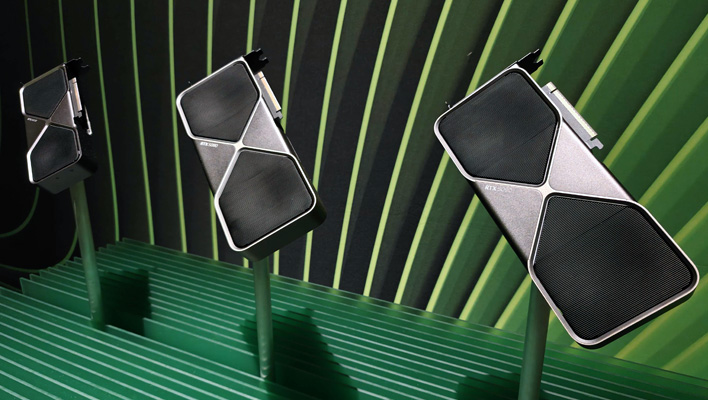NVIDIA is promising some monster gains from its
new flagship graphics card, the GeForce RTX 5090. That's especially true if taking advantage of a new DLSS implementation, DLSS 4 with Multi Frame Generation, which is a whole topic in and of itself. DLSS or no DLSS, the GeForce RTX 5090 is a beast, based on the specs, but perhaps not as physically big as you thought it would be.
We already showed off some in-person
photos of the GeForce RTX 5090 that we snapped at NVIDIA's booth at the Consumer Electronics Show (CES) in Las Vegas. One thing that was immediately apparent from the seeing the card in person is the slimmer design, compared to the GeForce RTX 4090. Whereas the 4090's stock cooler encroaches on a third expansion slot (and threatens a fourth), the GeForce RTX 5090, despite its powerful upgrades, is a two-slot card.
To make that happen, NVIDIA's engineers designed a svelte printed circuit board (PCB) layout. We're holding the entire board in our hand in the photo above, to give a sense of scale. It's an impressively remarkable thing to do when so many components have been sped up compared to the previous generation flagship, such as employing faster GDDR7 memory chips, a faster PCI Express bus, and so forth.
NVIDIA's actually employing a three-stacked solution. The main piece shown up top houses the GB202 Blackwell GPU packing 92 billion transistors and 170 Streaming Multiprocessors (versus 128 in the GeForce RTX 4090), 32GB worth of GDDR7 memory chips (28Gbps) linked to a 512-bit memory bus for nearly 1.8TB/s of memory bandwidth, and 30-phrase VRM layout.
It also houses the 12V-2x6 power conector, which you can see protruding in the upper-right corner (as oriented). NVIDIA rates the GeForce RTX 5090 for 575W of total board power (TBP).
The board sits in the middle of NVIDIA's Founders Edition model and is flanked by fans on either side on the cooling shroud. And of course we can expect NVIDIA's partners to release custom models with their own cooling solutions and other perks (like factory overclocks).
We're looking forward to putting the GeForce RTX 5090 through its paces. In the meantime, we're marveling at the engineering that went into designing this thing from top to bottom.

